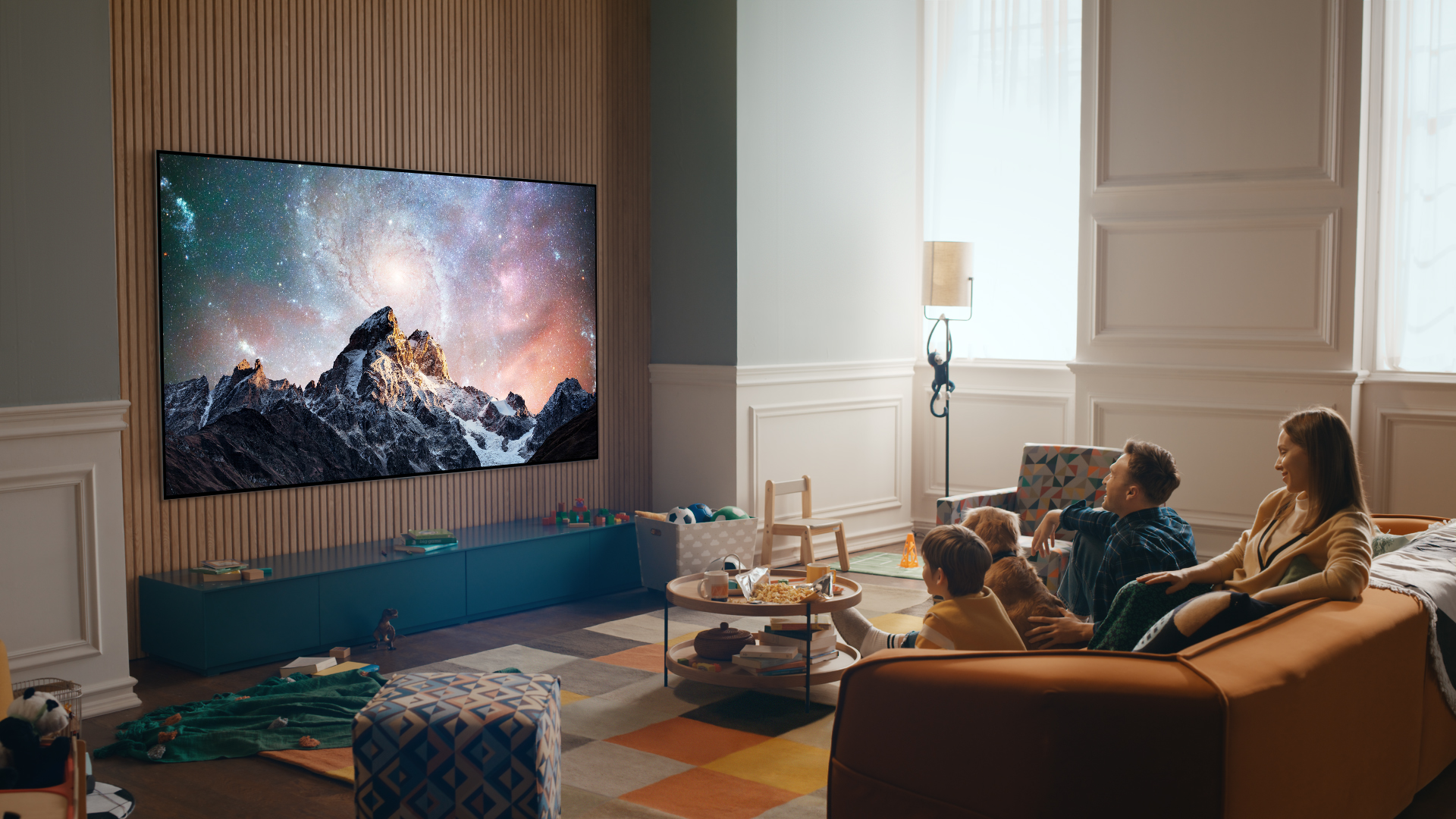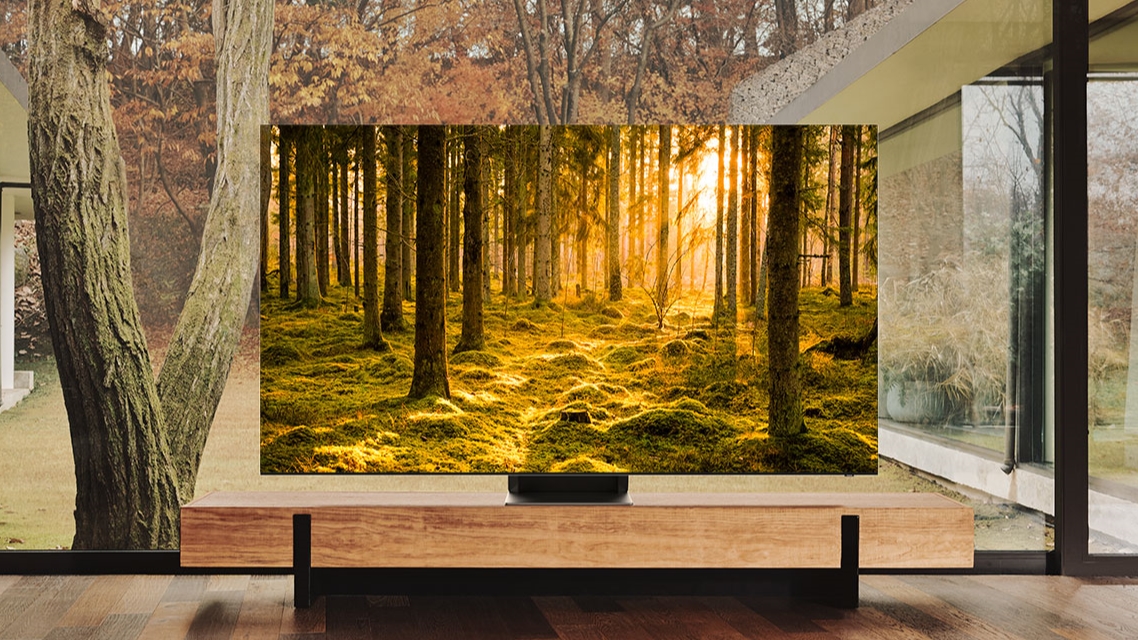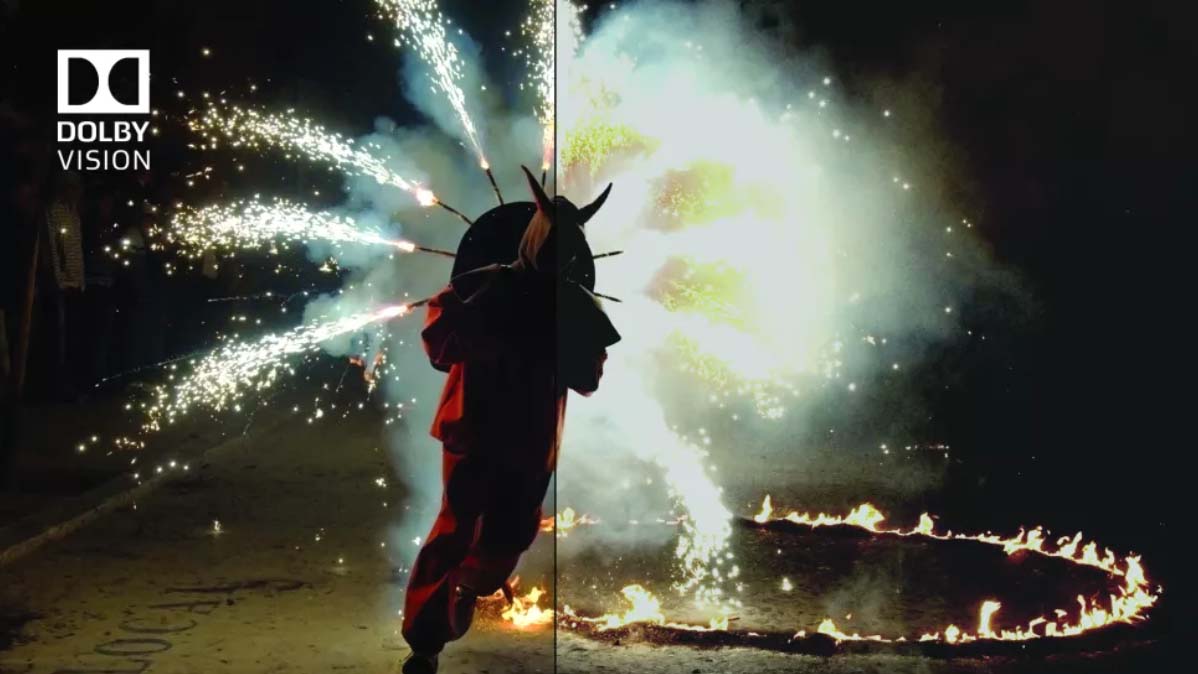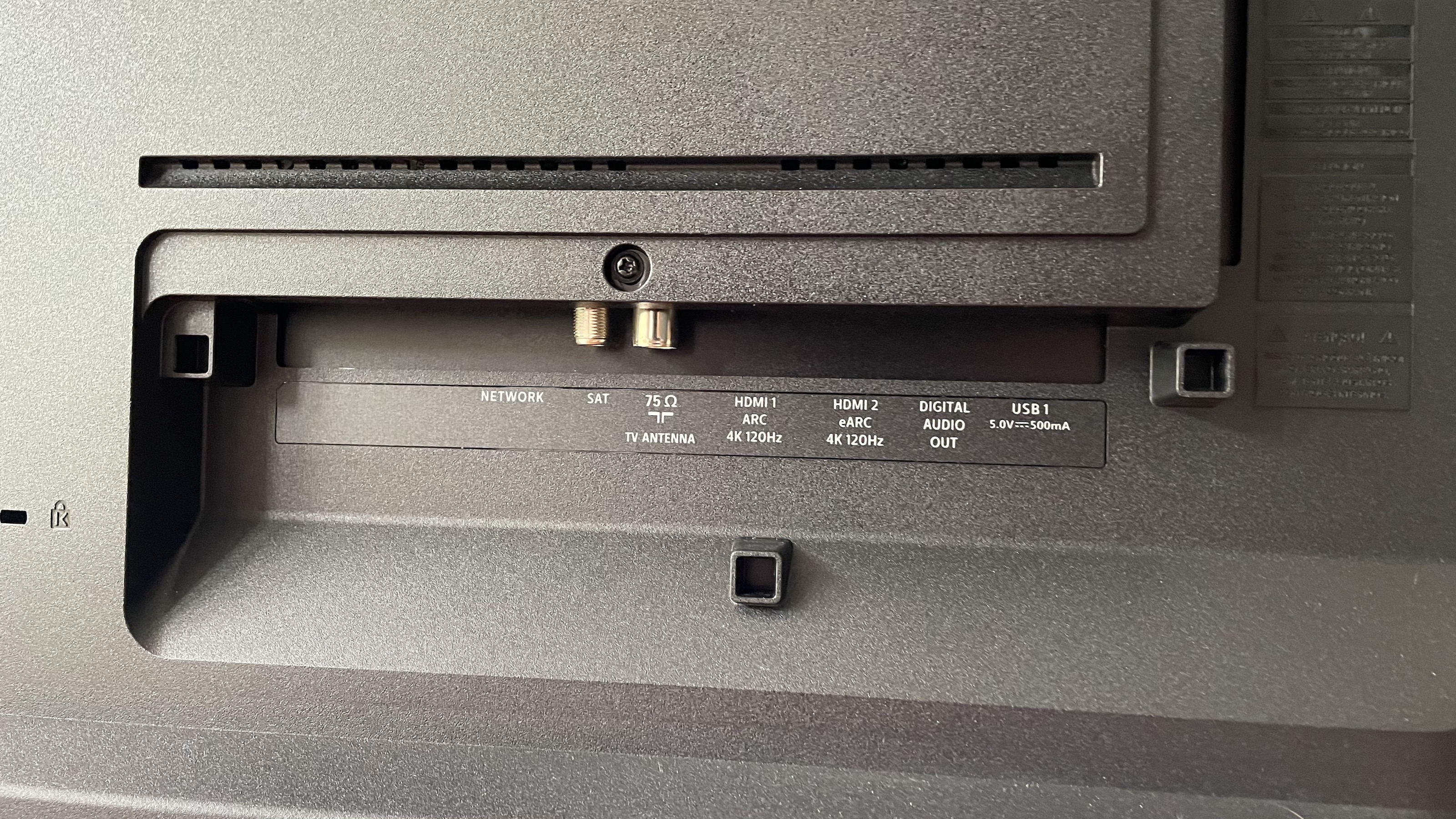5 things you need to know before buying an 85-inch TV
There's much more than just size to think about, so here's what you need to know

An 85-inch TV is no joke. The upgrade to a screen this massive is not a simple one by any means – it requires serious investment and plenty of room. However, the investment in terms of both money and space is quite fulfilling when you consider the enhanced viewing experience that the best 85-inch TVs offer.
It significantly transforms a room, adding a cinematic feel and immersion that only bigger TVs can provide – you can really take advantage of what the best TVs have to offer. And this is a size where buying one of the best 8K TVs can be really worthwhile, because with all that space, the extra pixels are more noticeable. If you’re looking for a home theater experience, bigger is better, and 85-inch TVs are certainly bigger.
But there are a few important factors to consider before shelling out for one of these giants – especially now that you can get them for record-low prices. What will you be giving up if you get a cheaper screen? What kind of screen tech is best? And should you go for higher resolution?
We'll answer the big questions here, so that if you're looking at a huge TV, you can work out which will be right for you.
1. It's worth considering 8K
At smaller sizes, we don't tend to push people towards 8K TVs, but at this size, it's absolutely something to think about if you're going premium. Yes, there's still the lack of 8K content available on the market today, but it's upscaling from 4K that we're interested in.
You will get four times the resolution offered by a 4K display, and the enormous difference in the number of pixels will actually be noticeable at this size. Samsung’s QN900B is the best option to consider if you want a high-end screen, though the more affordable Samsung QN800B is also a strong choice. It delivers impressive picture quality, striking contrasts, and exceptional brightness.
However, this isn’t to say that an 85-inch screen with 4K resolution will result in a poor viewing experience – indeed, if you'll sit quite far away, you wouldn't be able to make out the extra detail anyway. And if you want a huge TV without saving a lot of money, you'll need to go 4K anyway.
Get daily insight, inspiration and deals in your inbox
Sign up for breaking news, reviews, opinion, top tech deals, and more.

2. Mini-LED QLED is much cheaper than OLED
As usual, OLED remains the most premium but also the priciest option. It is known for its excellent contrast levels with the blackest of black tones and the whitest of whites. If you’re a cinephile with a considerable amount of moolah to spare and looking to create a serious home theater setup, OLED is your best bet.
Recent OLED panels have improved the brightness of the technology, making more suited to use in brighter family rooms too. The LG C2 83-inch is about 20% brighter than the previous model, while the 83-inch LG G2 is even brighter still. But both are extremely expensive – depending on the region, the LG C2 can cost 30% more than the Samsung QN90B high-end Mini-LED TV. It's a major price premium.
The mini-LED Neo QLED technology in high-end Samsung TVs is wonderful despite being much cheaper. It offers excellent picture quality, well-saturated colors, and bright visuals. It includes mini-LED backlighting to provide contrast that's close to the depth of OLED. Using LEDs that are 40 times smaller than a regular LED, mini-LED displays pack thousands of tiny LEDs in their panel. This results in more precise dimming to black in dark areas, but stunning HDR brightness overall – far beyond what OLED can achieve. While mini-LED displays admittedly can’t fully match an OLED’s performance in terms of contrast, they’re a brilliant cheaper alternative offering pretty impressive brightness.
Take another step down and you can get a QLED TV or (or equivalent) for about another 30% less. The Samsung Q80B and Sony X90K are both stunning TVs with 85-inch models available. They use direct LED backlighting, which means better contrast and brightness than budget TVs, with some local dimming, but not the advanced handling of light and dark that you get from mini-LED TVs.
A simple LCD/LED combo remains the most affordable option, and this will reduce contrast and the depth of black tones again, and most budget TVs come with less advanced image processing too – which can noticeable in an 85-inch TV. We rate the Samsung BU8500 (or BU8000 depending on region) as one of the strongest choices at this size.

3. Aim for Dolby Vision
HDR, or High Dynamic Range, is a feature that improves the brightness, contrast, and vibrance of your content, and gives it a more realistic feel. HDR10 and HLG are the two most common HDR formats supported on TVs – almost every model supports both of these.
HDR10+, and Dolby Vision are the more advanced options, and many big-name TVs will only support one or the other. For example: Sony and LG feature Dolby Vision; Samsung features HDR10+. Dolby Vision is the second-most popular format used by streaming services, and is probably the best in the game. HDR10+ gives Dolby Vision tough competition by being effectively as good in terms of performance, but is much less widely used.
We'd suggest looking for a TV with Dolby Vision because it's so widely supported, but it's not essential – if you don't have it, Dolby Vision content just turns into HDR10 content when you watch it, which all HDR TVs support.

4. Don’t underestimate the importance of ports
On a screen this size, ports are a big deal. They fill up fast so you should look for four ports on your new display. You're not buying a TV this big because you're a casual viewer, right?
Specification is crucial too. Make sure at least two of these ports feature HDMI 2.1 technology and the capability to handle up to 48Gbps of data. HDMI 2.1 supports a refresh rate of 120Hz at 4K and 60Hz at 8K which is perfect for next-gen gamers to enjoy a stutter-free experience. It also facilitates VRR (Variable Refresh Rate) and ALLM (Auto Low Latency Mode). Both of these features assist in providing a lag-free gaming experience without any screen tearing or jitter. Ideally, you'd have all four ports supporting this tech, but that's not likely with mid-range models.
ARC or eARC support is also important. ARC is a feature that allows your TV to connect to one of the best soundbars or best AV receivers with a single HDMI cable, and eARC is an improvement over ARC by offering higher data speeds for higher-quality audio. And, since modern TVs rarely feature sufficiently good audio on their own (it's the peril of being so thin), chances are that you’ll want to invest in a soundbar. So make sure there's HDMI ARC support.
5. Audio features
As mentioned above, it is important to invest in a soundbar if your TV features underwhelming audio. For an 85-inch display, you really want to make sure your audio matches the quality of your video for the best overall experience. And in an ideal world, you also want to make sure your screen supports Dolby Atmos encoding. Dolby Atmos is a surround-sound technology that provides a more immersive sound experience suitable using 3D mapping tech – the best Dolby Atmos soundbars are an excellent (simple) home theater upgrade.
There are also a couple of screens that offer pretty impressive audio on their own. The Sony A80K is one example. It uses its entire screen as a speaker, and with the help of two bass drivers, it produces a fairly full and rich sound. Samsung QN85B is another TV with sufficiently good sound that may not require you to buy a soundbar. It sports a 60W audio system and while the results aren’t what you’d expect from a dedicated speaker setup, it’s pretty decent for a TV.
Buying an 85-inch TV is a big deal. Literally. The upgrade in physical size and hike in price requires careful consideration. We hope this guide gave you some clarity on which features are important to look at, and the product recommendations provided some helpful context. For more, don't miss our guide to the best 85-inch TVs available today.
Dua is a freelance technology writer who's contributed to TechRadar, PCMag and ScreenRant. She's been a technology fan since she was young, and used to pore over the latest product reviews. When not playing with or researching some new piece of tech, you might find her reading, working out or playing the ukelele.